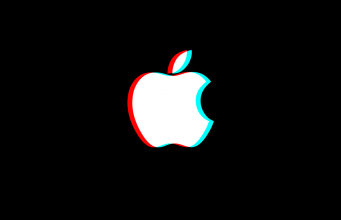Report: Apple Mixed Reality Headset Delayed to Late 2023 Amid Decreased Confidence in Market Appeal
Ming-Chi Kuo, a respected supply chain analyst, reports that Apple is tamping down enthusiasm for its upcoming mixed reality headset, which was rumored to see its big announcement at Apple’s Worldwide Developers Conference (WWDC) in June.
In a tweet, Kuo reports Apple is delaying release of its MR headset due to decreased optimism in recreating the “iPhone moment” the company was hoping to achieve with the device.
Kuo, an analyst at Asia-Pacific financial services group TF International Securities, is widely considered one of the most accurate voices in predicting Apple releases. Kuo has made many predictions in the past based on supply chain movements, including Apple’s 2020 switch to its own custom ARM-based processors for Mac computers, the 2019 release of a new MacBook Pro with a 16-inch display, and the release of the entry-level iPad with an A13 chip in 2021—just to name a few.
Kuo says Apple’s MR headset, which is reportedly codenamed N301, is being pushed back “another 1-2 months to mid-to-late 3Q23,” noting that the assembly line delay could mean we won’t see the new device at WWDC 2023 in early June as previously reported by The Financial Times earlier this month.
It was said Apple CEO Tim Cook was a leading force in pushing the device’s launch this year, something that’s reportedly been a source of tension between the Apple chief and the industrial design team since the company began efforts in 2016.
Furthermore, Kuo says that due to the device’s delay in mass production, “the shipment forecast this year is only 200,000 to 300,000 units, lower than the market consensus of 500,000 units or more.”
“The main concerns for Apple not being very optimistic regarding the market feedback to the AR/MR headset announcement include the economic downturn, compromises on some hardware specifications for mass production (such as weight), the readiness of the ecosystem and applications, a high selling price (USD 3,000-4,000 or even higher), etc,” Kuo concludes.
If you’ve been following with the Apple rumor mill for the past few years, you’ll know there are almost too many reports to name at this point. To simplify, we’ve included a list of the headset’s rumored features and specs which we’ve collated from those reports.
Take note, none of the info below has been confirmed by Apple, so please take it with a large grain of salt.
Rumored Apple MR Specs
- Resolution: Dual Micro OLED displays at 4K resolution (per eye)
- FOV: 120-degrees, similar to Valve Index
- Chipset: Two 5nm chips. Includes a main SoC (CPU, GPU, and memory) and a dedicated image signal processor (ISP). Chips communicate via a custom streaming codec to combat latency.
- Battery: Waist-mounted battery, connected via MagSafe-like power cable to the headset’s headband. Two-hour max battery life, although hotswappable for longer sessions.
- Passthrough: ISP chip contains custom high-bandwidth memory made by SK Hynix, providing low latency color passthrough
- Audio: H2 chip, providing ultra-low latency connection with the second-generation AirPods Pro and future AirPods models. No 3.5mm and possible no support for non-AirPod BT headphones.
- Controller: Apple is said to favor hand-tracking and voice recognition to control the headset, but it has tested a “wand” and a “finger thimble” as alternative control input methods.
- Prescription Lenses: Magnetically attachable custom prescription lenses for glasses-wearers.
- IPD Adjustment: Automatic, motorized adjustment to match the wearer’s interpupillary distance.
- Eye Tracking: At least one camera per-eye for things like avatar presence and foveated rendering
- Face & Body Tracking: More than a dozen cameras and sensors capture both facial expressions and body movements, including the user’s legs.
- Room Tracking: Both short- and long-range LiDAR scanners to map surfaces and distances in three dimensions.
- App Compatibility: Said to have the ability to run existing iOS apps in 2D.
- Price: $3,000 – $4,000
Design Rumors
- Outer Shell: Aluminum, glass, and carbon fiber to reduce its size and weight. Cameras are largely concealed for aesthetic reasons.
- Presence Displays: Outward-facing display can show user’s facial expressions and also presumably eye movements. Said to be an always-on display similar in latency and power draw of Apple Watch or iPhone 14 Pro.
- Dedicated Passthrough Switch: Digital Crown-like dial on its right side to switch between VR and passthrough.
- Headstrap: Various available, including consumer-focused headstrap similar in material to Apple Watch sport bands with built-in speakers. Unspecified, but different headstrap targeted at developers.
